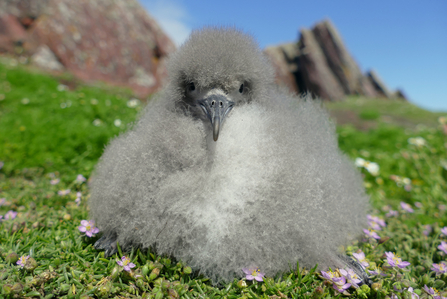We’ve been lucky to see The Wildlife of South and West Wales’ very own Skomer Island feature in the first and final episodes of Wild Isles. In last night’s Ocean episode, we saw our most numerous island resident, the Manx shearwaters showcased by Sir David.
Skomer is home to half the world’s population of Manx shearwaters. Every spring 700,000 of these seabirds return to the island, travelling a whopping 7000 miles from South America, to breed and rear their chicks. With the cutting-edge cameras used to make Wild Isles, we were able to get an incredible insight into the behaviour of these secretive seabirds.
Although 700,000 Manx shearwaters live on the island, they aren’t as easy to spot as you might think due to their nocturnal lifestyle, but the number of burrows covering the island gives an indication of the size of our shearwater population. Like puffins, they nest underground and rear their chicks in the same burrow every year.


